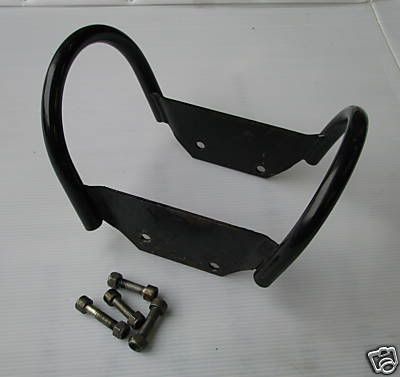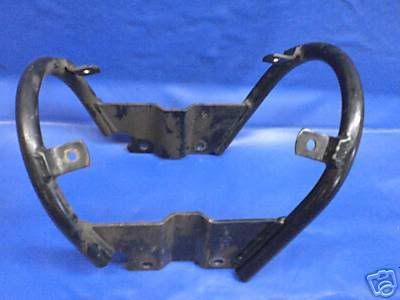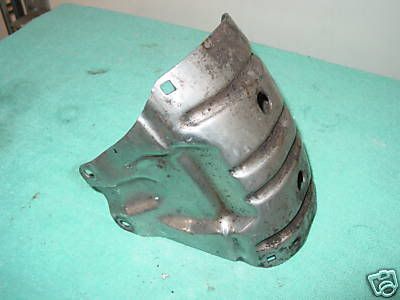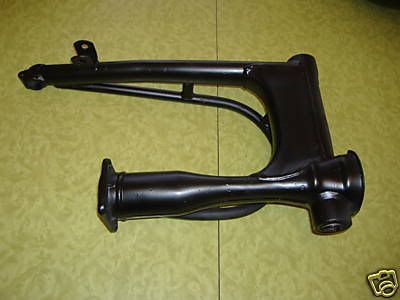O
orbitangel
Guest
Triple Clamps and Whatnot
This thread has my curiosity going. Let's begin with triple clamps. The stock one never impressed me much; basically 1/8 in. (approx.) alloy steel sheet, sitting on top of the fork tubes and attached to them only by the caps. Nothing to keep the tube from rotating in the top clamp. When I bought my second RS (a '78 in 1980) it already had one of these installed:
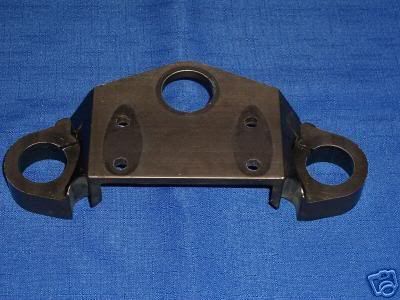

I never knew who made it (there are no markings of any kind) but I really liked it and it not only tightened-up my front end vs stock but also kept my nose out of the dirt during hard stops. I think it could be an old RPM (Reg Pridmore) part but I have never been able to prove that. I like the way it clamps the fork tubes tightly and ALSO pushes them down about one inch, thus raising the front-end an equal amount. * CORRECTION: It will actually raise the front of the bike by roughly one inch, multiplied by the cosine of the fork angle - maybe about .866 in. and increase the wheelbase by the sine of the fork angle, around .5 in. After I got my current RS (about six years ago) I was able to find one on fleaBay and now run it on my current ('77) RS. It is made of aluminum, anodized black. The stock speedo/tach bracket has to be altered a little bit in order to fit.

The San Jose clamp is also very nice as well but does not perform the second function.
Does anybody out there know of a certainty who made the black one? Inquiring minds want to know!
San Jose BMW has a top triple to fit R100RS's for about 120.00. A pretty good price. I am going to purchase one, then install a pair of Progressive springs. I already have a Telefix brace on. I noticed an immediate difference after installing the brace. The front end felt "more of a piece". The Forsa shocks I put on back worked well as I rode the bike a couple of days ago.
This thread has my curiosity going. Let's begin with triple clamps. The stock one never impressed me much; basically 1/8 in. (approx.) alloy steel sheet, sitting on top of the fork tubes and attached to them only by the caps. Nothing to keep the tube from rotating in the top clamp. When I bought my second RS (a '78 in 1980) it already had one of these installed:


I never knew who made it (there are no markings of any kind) but I really liked it and it not only tightened-up my front end vs stock but also kept my nose out of the dirt during hard stops. I think it could be an old RPM (Reg Pridmore) part but I have never been able to prove that. I like the way it clamps the fork tubes tightly and ALSO pushes them down about one inch, thus raising the front-end an equal amount. * CORRECTION: It will actually raise the front of the bike by roughly one inch, multiplied by the cosine of the fork angle - maybe about .866 in. and increase the wheelbase by the sine of the fork angle, around .5 in. After I got my current RS (about six years ago) I was able to find one on fleaBay and now run it on my current ('77) RS. It is made of aluminum, anodized black. The stock speedo/tach bracket has to be altered a little bit in order to fit.

The San Jose clamp is also very nice as well but does not perform the second function.
Does anybody out there know of a certainty who made the black one? Inquiring minds want to know!
Last edited:


